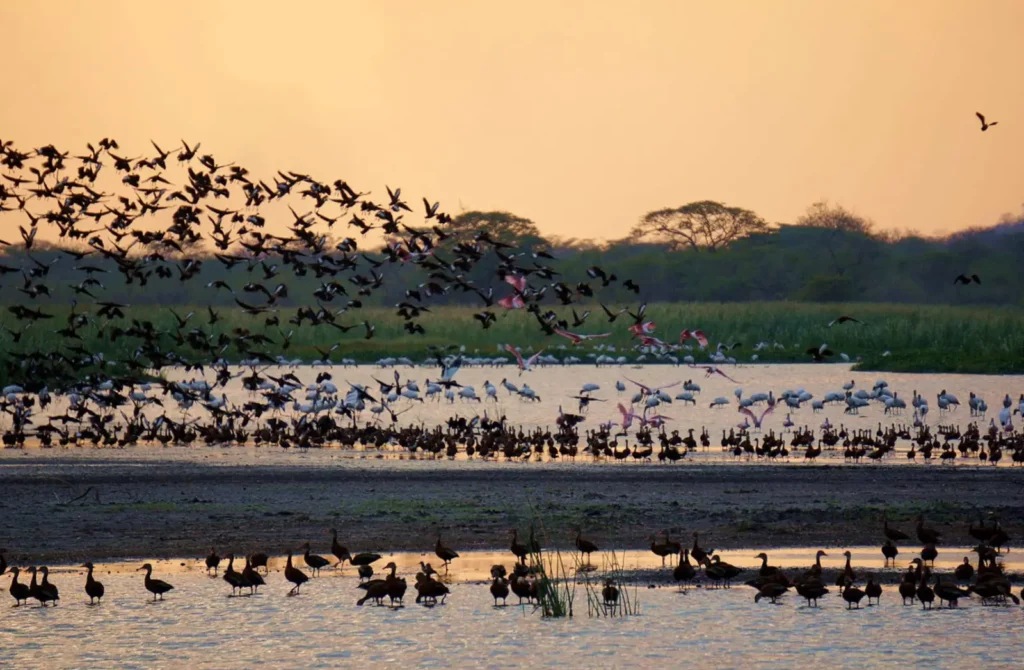Palo Verde National Park
Palo Verde is a remote national park covering 16,000 hectares of the Pacific Slope of Costa Rica. Located in the province of Guanacaste, the park is a combination of dry tropical forest, marshlands, mangroves, and secondary forest. The park is a very important breeding ground for resident birds and the wintering home of migratory species.…

Quick Facts on Palo Verde National Park
Hotspot Type
National Park
Habitat
Bird Species
Jabiru, Roseate Spoonbill, Northern Jacana, Boat-billed Flycatcher, Bare-throated Tiger-Heron, Common Black Hawk, Gray Hawk, Roadside Hawk, Plain-capped Starthroat, Green-breasted Mango, Olive Sparrow, Long-tailed Manakin, Black-headed Trogon, Spotted Sandpiper, Solitary Sandpiper, Purple Gallinule, Limpkin, Wood Stork, White Ibis, Little Blue Heron, Tricolored Heron, Green Heron, Great Blue Heron, Yellow-crowned Night-heron, Black-crowned Night-heron, Peregrine Falcon, Cattle Egret, Snowy Egret, Mangrove Hawk, Osprey, Snail Kite, Canivet’s Emerald, Common Ground-dove, White-winged Dove, Stripe-headed Sparrow, Thicket Tinamou, Rufous-naped Wren, Banded Wren, White-fronted Parrot, Yellow-naped Parrot, Turquoise-browed Motmot, White-throated Magpie Jay, Orange-fronted Parakeet, Cinnamon Hummingbird, Spot-breasted Oriole, Streak-backed Oriole, White-lored Gnatcatcher, Brown-crested Flycatcher, Rufous-capped Warbler
Palo Verde is a remote national park covering 16,000 hectares of the Pacific Slope of Costa Rica. Located in the province of Guanacaste, the park is a combination of dry tropical forest, marshlands, mangroves, and secondary forest. The park is a very important breeding ground for resident birds and the wintering home of migratory species. The combination of rivers, wetlands, and forest creates an extraordinary habitat for hundreds of species of birds. Palo Verde is also the top spot for seeing the Jabiru Stork.
Palo Verde National Park
Get a Free Quote